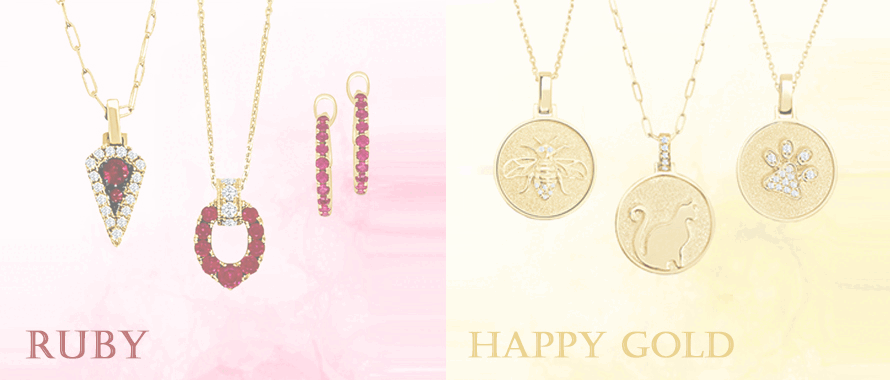Articles and News
Diamonds: ‘Real Is Rare’ Bows As WSJ Highlights Synthetic Threat; Fancy Color Prices Rise; More November 09, 2016 (0 comments)

New York, NY—After debuting its unconventional approach to marketing diamonds to a new generation, the Diamond Producers Association (DPA) tapped actor and producer Nick Cannon to explore real relationships in “Why Real is Rare,” a short docu-film that explores how and when couples realize their connection has become a commitment. The film was released November 2 and is the latest iteration of the DPA’s new communications platform: “Real is Rare. Real is a Diamond.”
At the same time, the Wall Street Journal on November 6 published an articled titled “De Beers Tries to Counter a Growing Threat: Man-Made Diamonds,” positing that increasing amounts of synthetic stones could alter diamonds’ perception of scarcity. Although the DPA’s concept behind the “Real Is Rare” campaign is focused on the idea of human relationships and connections in an increasingly digital world, the tagline is fortuitous in its double meaning. If the WSJ article is any indication, the mined-diamond market more than ever will need to emphasize the rarity of finer natural stones.
“Infinite quantities of man-made diamonds could theoretically be produced, upending a market that depends on a perception of relative scarcity to secure premium prices,” says the WSJ article, which also says that Morgan Stanley estimates synthetic diamonds could account for one-tenth of rough diamond sales within five years. Morgan Stanley analyst Menno Sanderse doesn’t expect synthetics to replace mined stones, but he says they’re already “a serious potential disrupter.”
At present, lab-grown diamonds still account for a minuscule percentage of total annual diamond production. At most, synthetic producers are capable of creating between 250,000 and 350,000 carats per year, says the article, compared with about 135 million carats of mined diamonds. They’re also not significantly cheaper: today running about 20% to 30% below comparable mined stones, though as mining costs increase—and the cost of creating synthetics could potentially decrease as technology advances—the delta may become much greater.
Meanwhile, the DPA—funded by the mining companies who are desperate for its marketing efforts to succeed—is doing its best to appeal to Millennials and even younger consumers. “Real is Rare. Real is a Diamond” is the diamond industry’s first category campaign in almost a decade.
“In ‘Why Real is Rare,’ we share stories about the standout moments of couples that shaped their relationships, the challenges they’ve faced, and their unique take on why their commitment is the real deal,” said Cannon, who interviewed six real-life couples for the DPA film. “Everyone loves in a different way, but they were all searching for something more genuine, and they found it in each other.”
Part of an emerging class of storytellers advancing new voices and perspectives through film and television, Cannon is inspired to share his own story and those of his generation. “Why Real is Rare” pulls from his professional and personal experiences to peel back layers from the couples’ stories and reveal new truths about human connection and commitment in the modern age.
The docu-short debuts digitally on the “Real is a Diamond” YouTube channel. It is the latest element of the DPA’s integrated campaign, a sharp departure from traditional diamond marketing that invites consumers to take a fresh look at diamonds as an ideal symbol of authentic, meaningful connection and commitment. “This campaign explores being connected versus having a connection. It’s common today to have hundreds, if not thousands, of connections. People are ‘connected’ online 24/7, but the ability to find someone special and have a genuine emotional, physical and spiritual connection with them feels more rare than ever before,” said Deborah Marquardt, chief marketing officer of the DPA. “The moments when couples realize ‘this is it’ are as precious and individual as a diamond itself.”
And as GIA senior industry analyst Russell Shor told the Wall Street Journal, “an attraction of a mined diamond remains “that it comes from deep from Mother Earth. They’re billions of years old. It’s probably the oldest thing we can buy.”
Consumers can view “Why Real is Rare” on the “Real is a Diamond” YouTube channel, and using the hashtag #RealisRare, consumers can join the conversation about the campaign on social media. For more information on the campaign, visit www.RealisaDiamond.com.
Demand for Natural Blues Drives Continued Fancy Color Diamond Price Increases
New York, NY—Amid the steady unrelenting drop in polished diamond prices, fancy color stones remain one bright spot for price appreciation.
Analysis of wholesale pricing data conducted by the Fancy Color Research Foundation (FCRF), shows fancy color diamond prices continuing a moderate gain overall—though not all colors are performing the same. Demand for pink and blue diamonds is driving those prices up, and offsetting price declines in lower-cost, commercial yellow diamonds. But traders say certain intense and vivid yellow diamond shapes such as rounds, pears, and emeralds did not see the same price declines.
Prices of blue and pink diamonds increased 1.2% and 0.5% respectively in the third quarter. Prices of yellow diamonds declined slightly, by 0.1%, in the same period, but overall, prices in the fancy color diamond category climbed by 0.4% for the period, compared to the 4.3% January-October decline in white diamonds.
For the 12 months ending October 2016, the Fancy Color Diamond Index appreciated by 0.9%. The Fancy Color Diamond Index is calculated based on live pricing inputs from a large sample of the world’s leading traders of fancy color diamonds in Asia, the United States and the Middle East. The Index is published by the nonprofit Fancy Color Research Foundation (FCRF), and tracks pricing data for yellow, pink and blue fancy color diamonds.
For more information, visit www.fcresearch.org.
Is Data Storage The Next Diamond Frontier?
New York, NY—While diamonds drive the majority of the jewelry industry’s livelihood—and synthetic diamonds threaten to disrupt it—those in the scientific world look at those crystallized bits of carbon in a whole different light.
Long used for industrial purposes like grinding and filing, diamond coatings also can protect glass windshields from scratches (critical in desert warfare), keep knife edges sharp, and potentially keep the human body from rejecting a medical device such as an artificial heart.
Now scientists are exploring the potential of diamonds as a means of data storage. A paper published in October by Science Advances suggests a tiny diamond—think melee, if not even the size for pavé—can store 100 times more data than a DVD. Moreover, what makes it work for data storage—inclusions—bring down its value as a gem.
The experiments were done using synthetic diamonds, though the researchers say it works for any material with the same kind of flaw and it also works with mined diamonds.
Still, the technology is years away, if it ever comes to fruition. An article in the New York Times points out that if a couple stores, say, digital wedding pictures in an engagement ring, there’s a good chance the data may be susceptible to light, which means wearing the ring outside could wipe out the wedding album.








